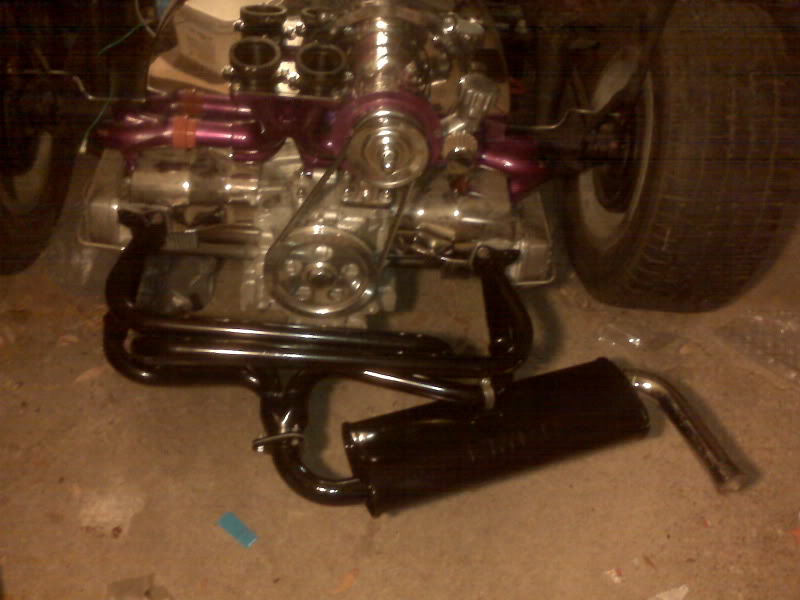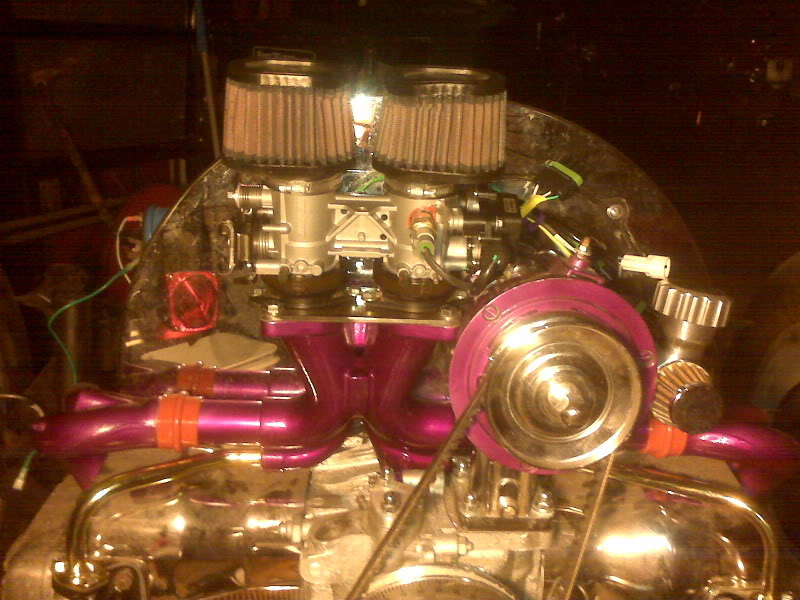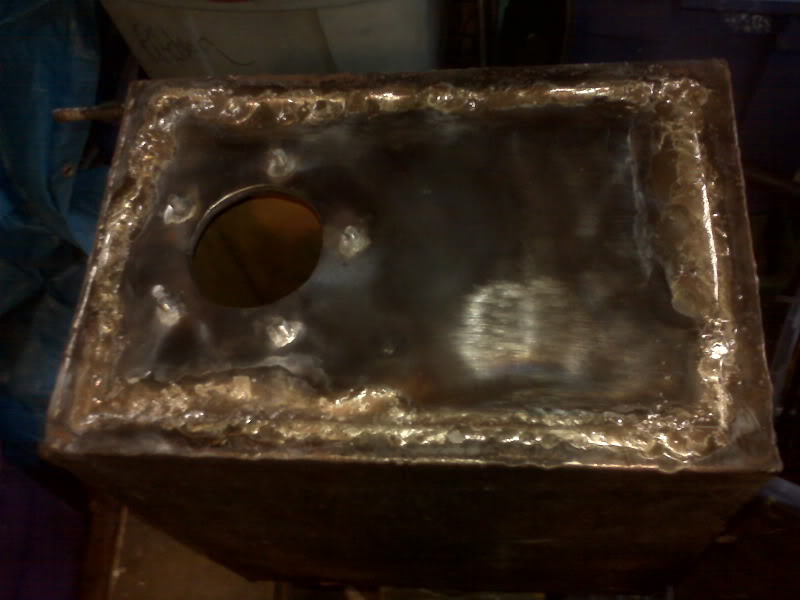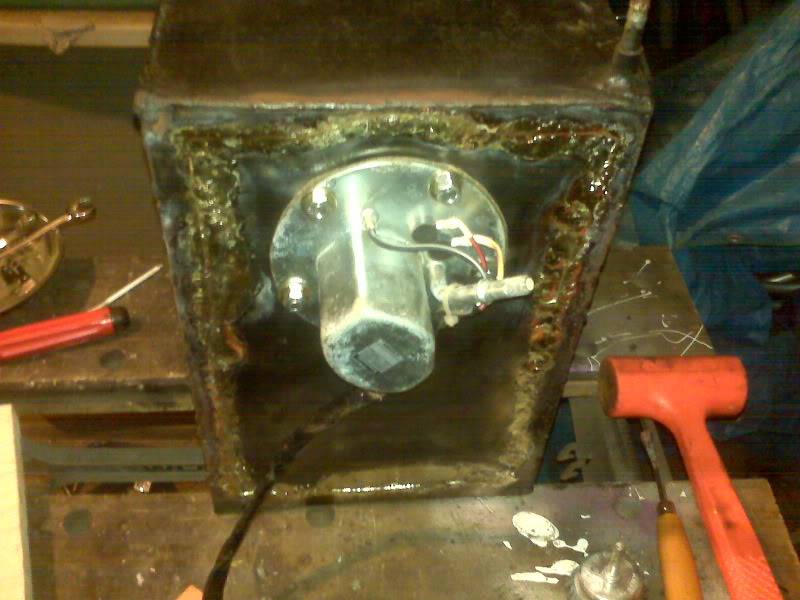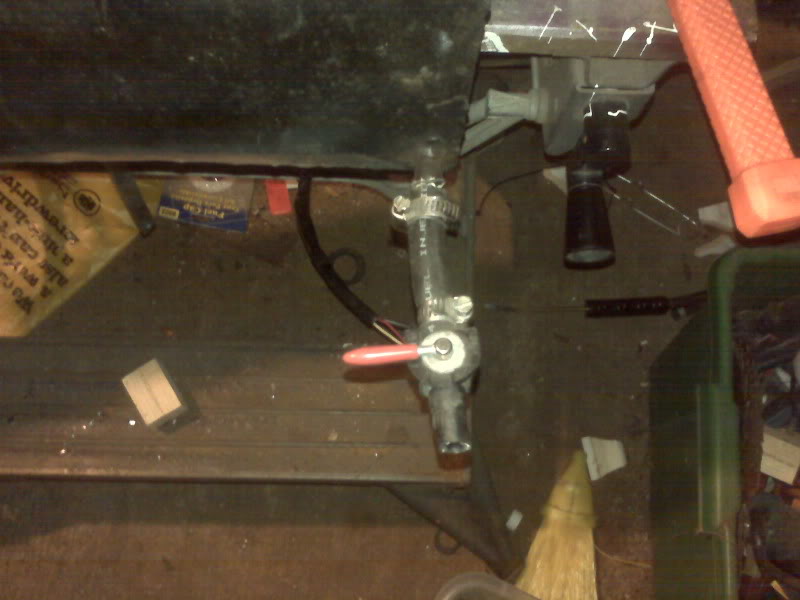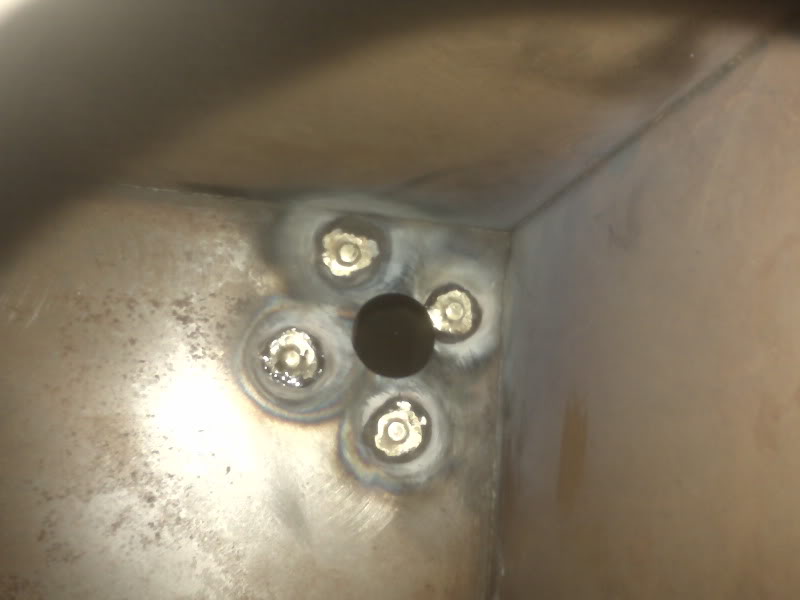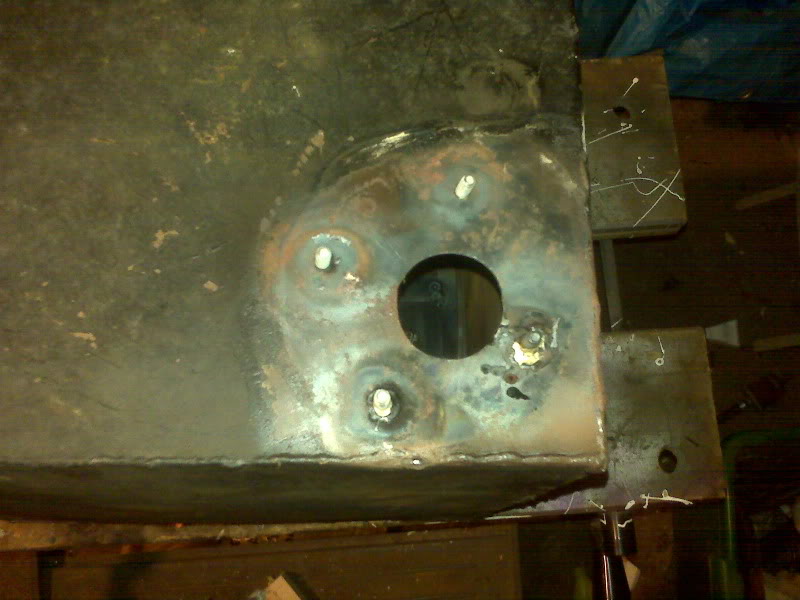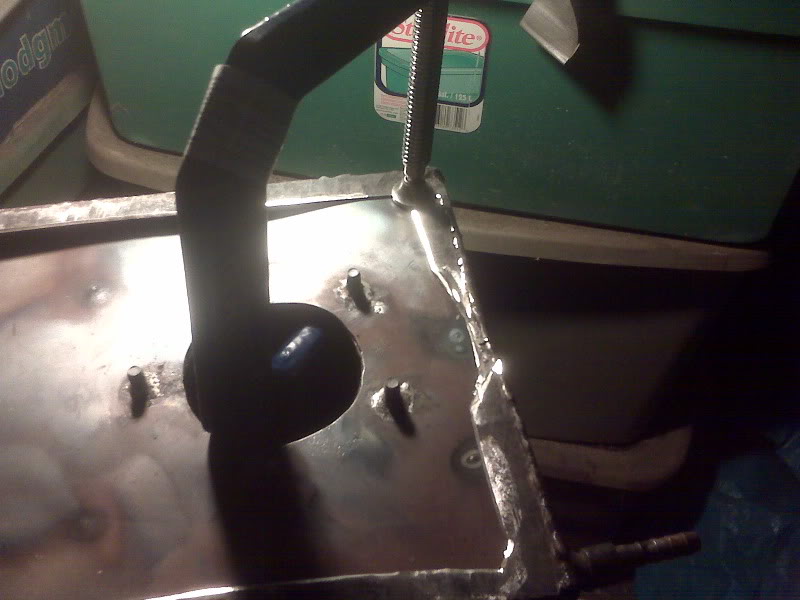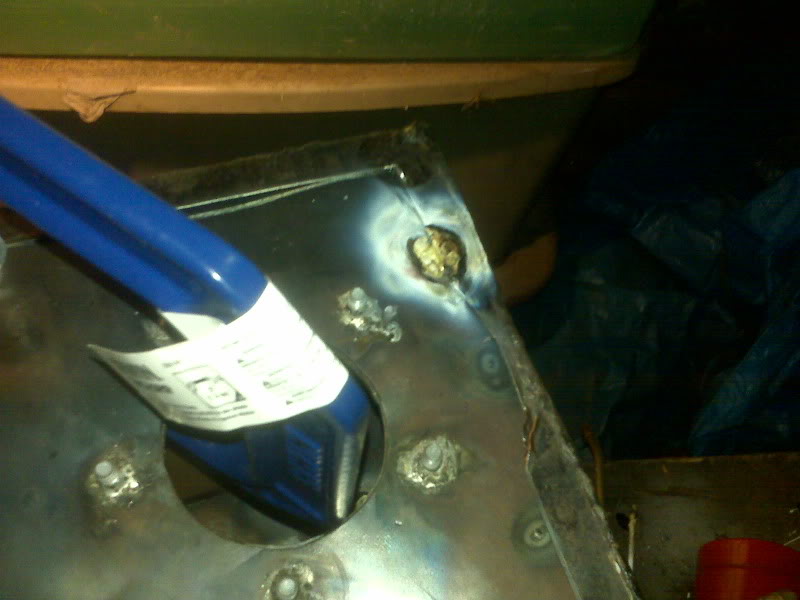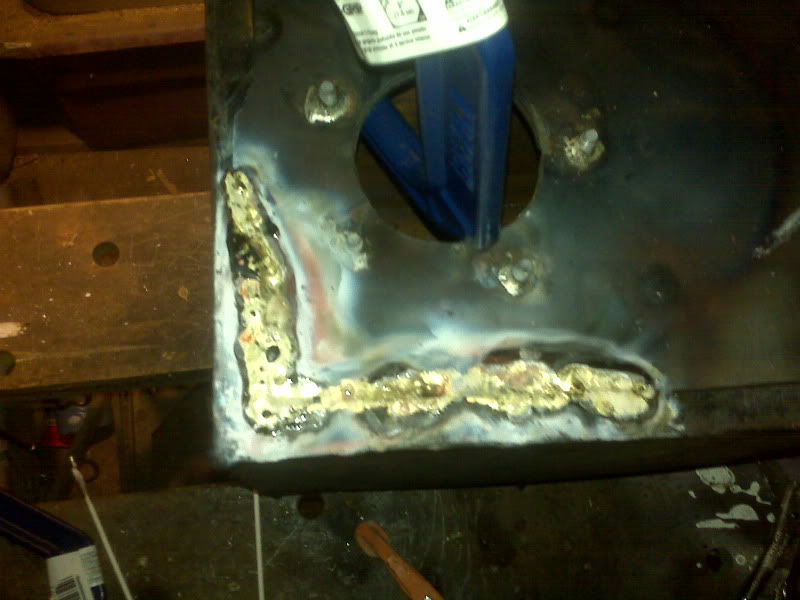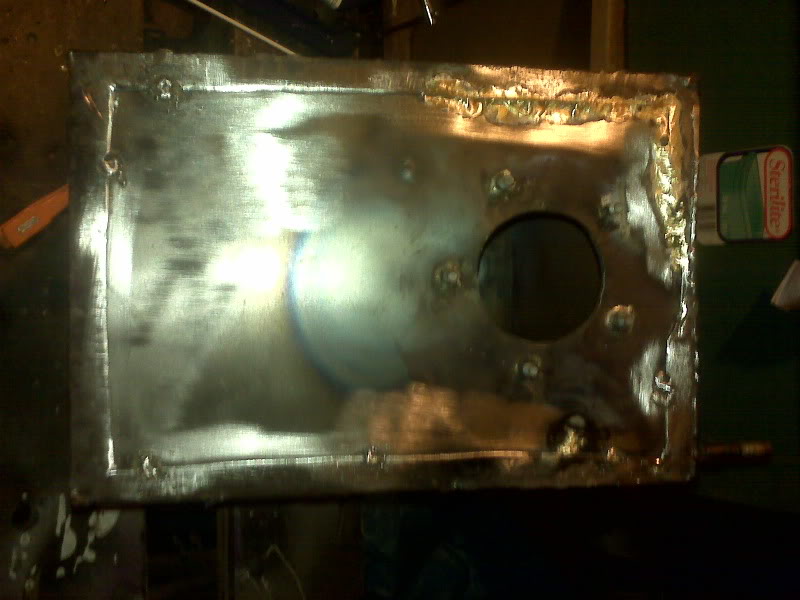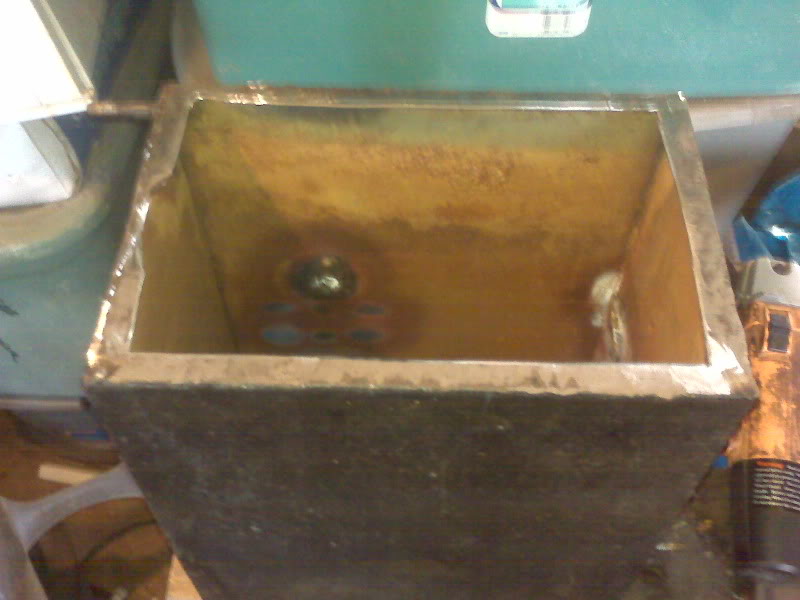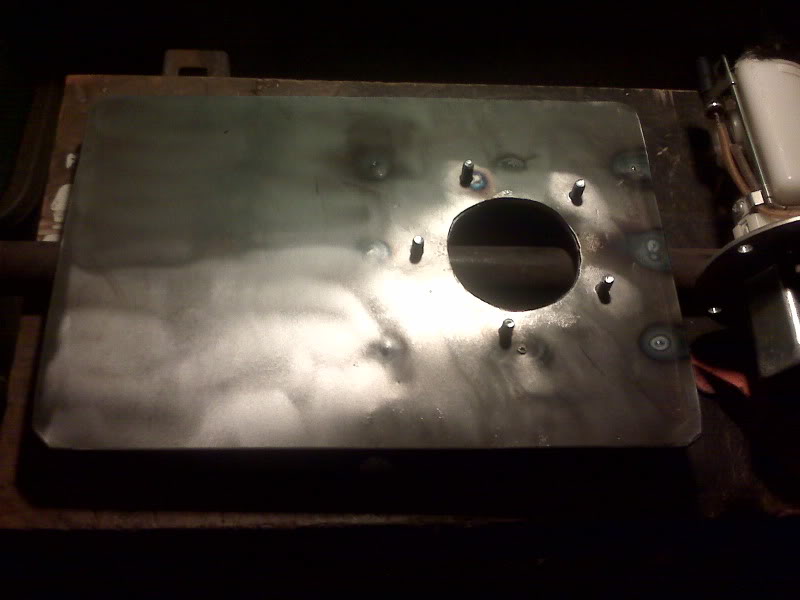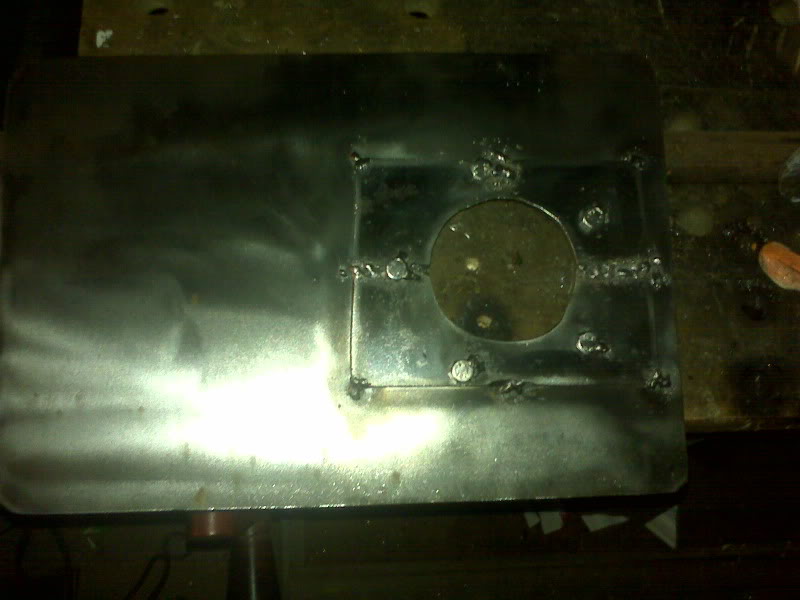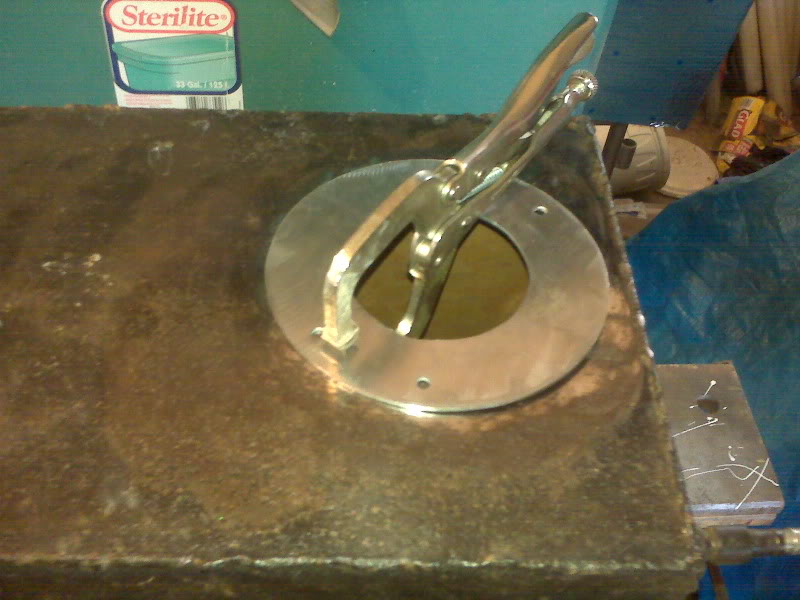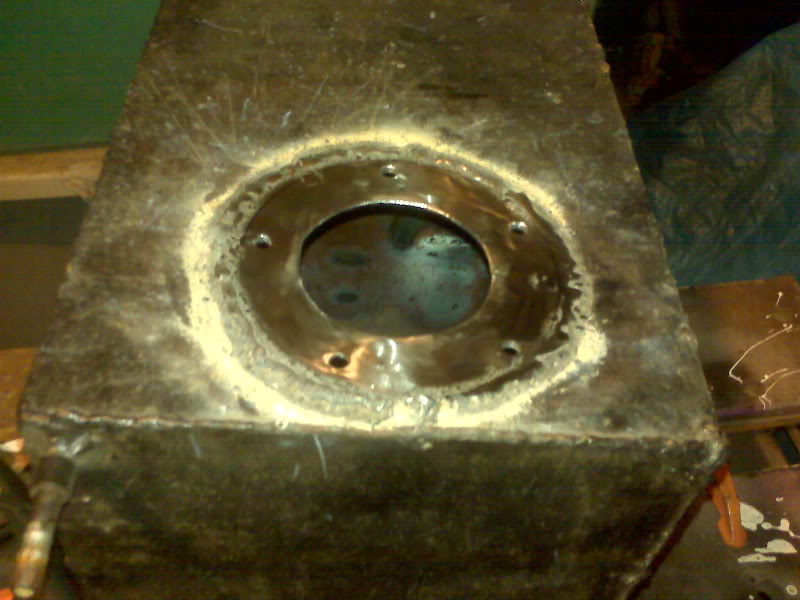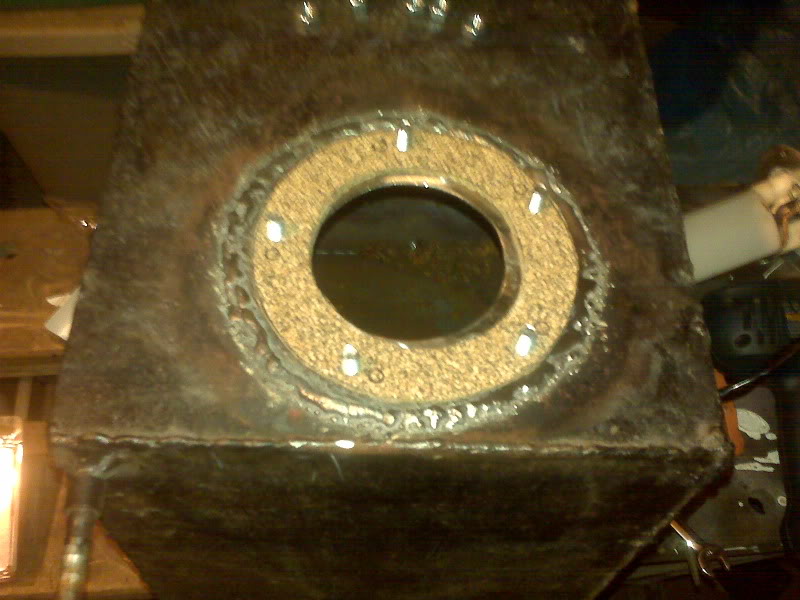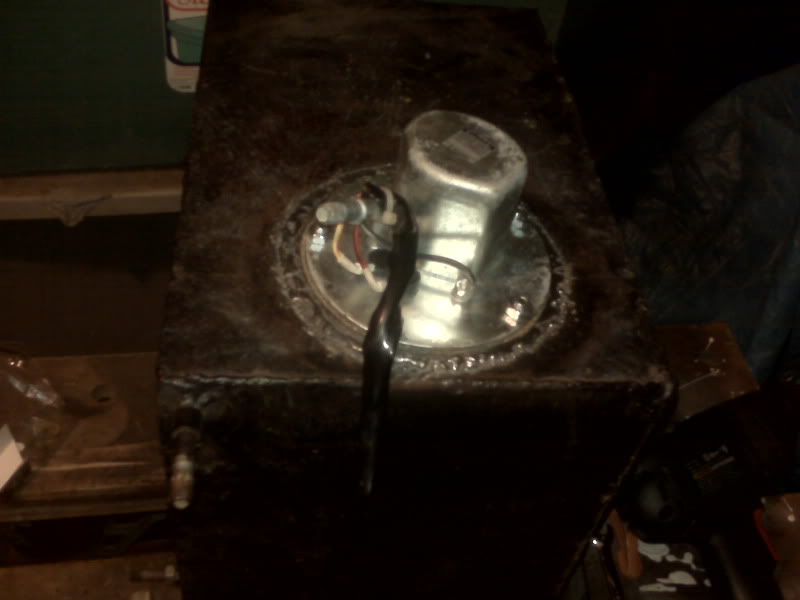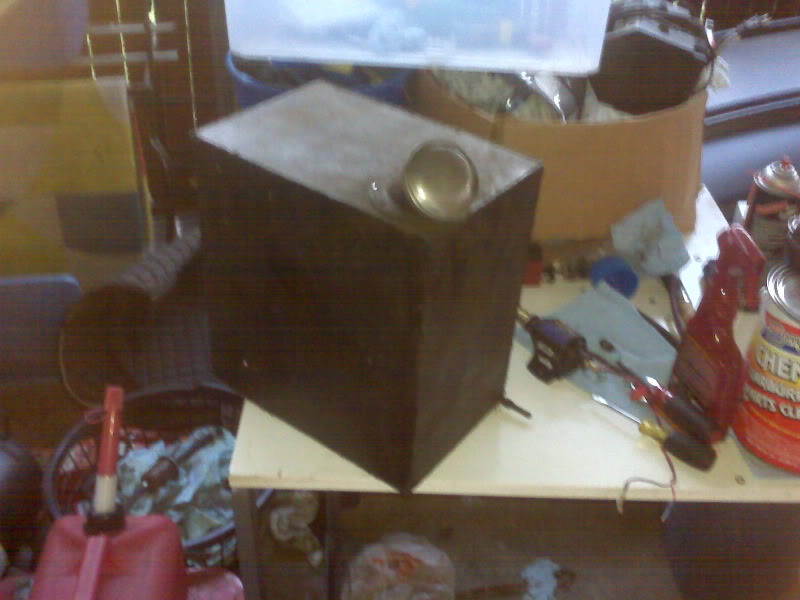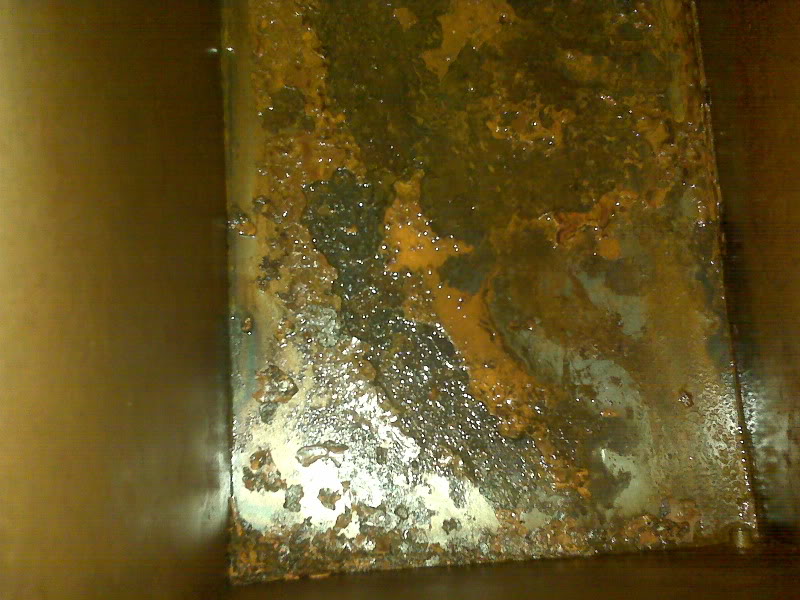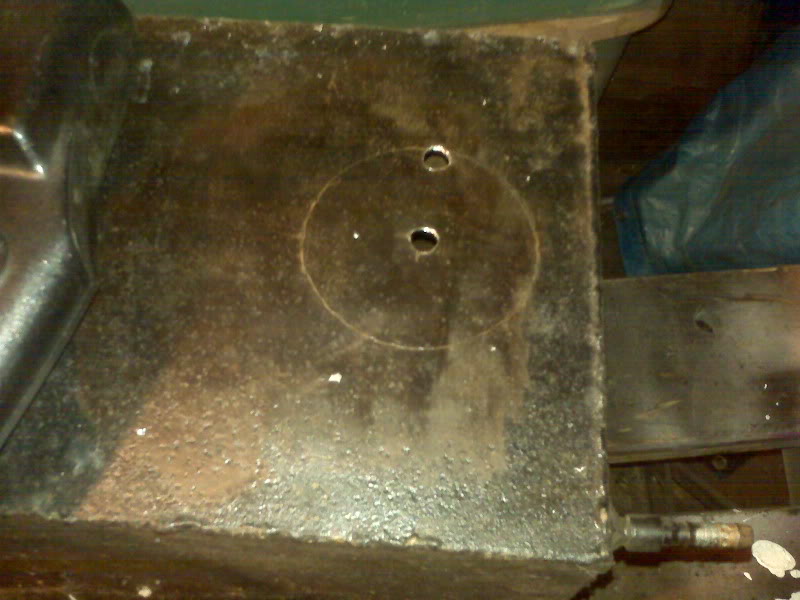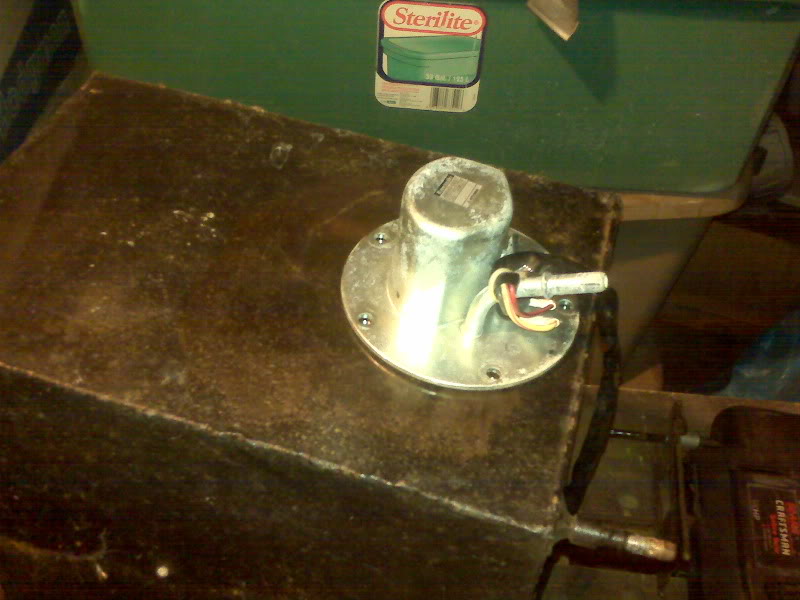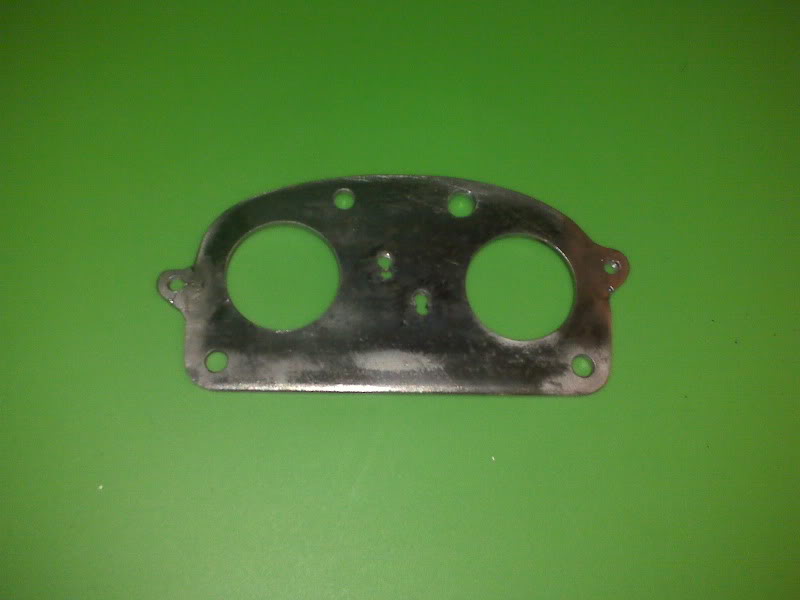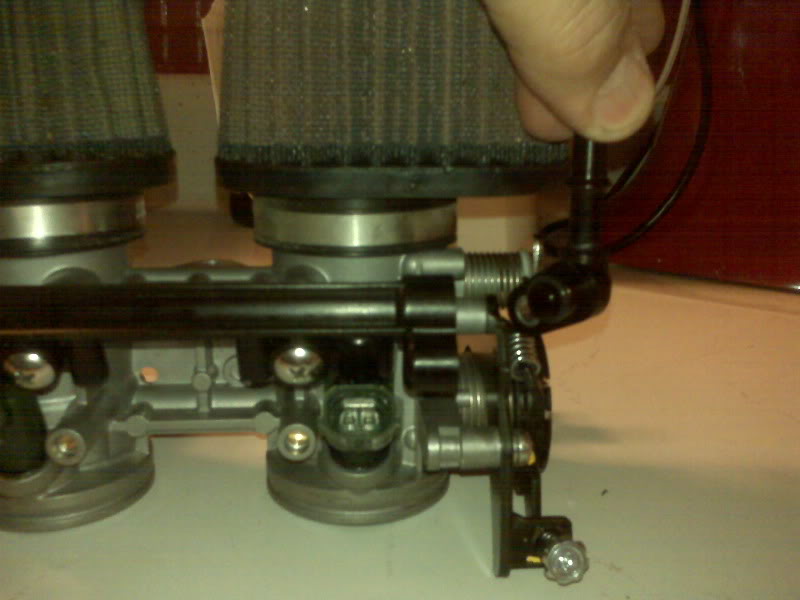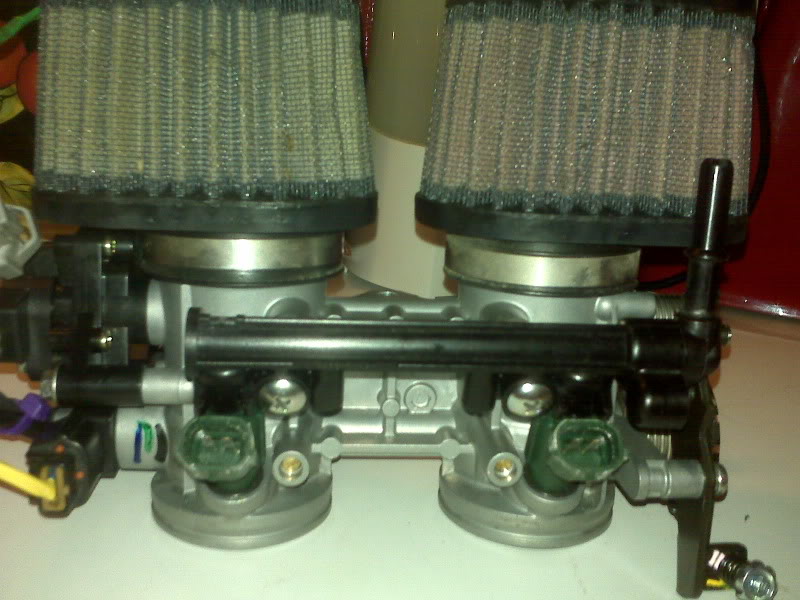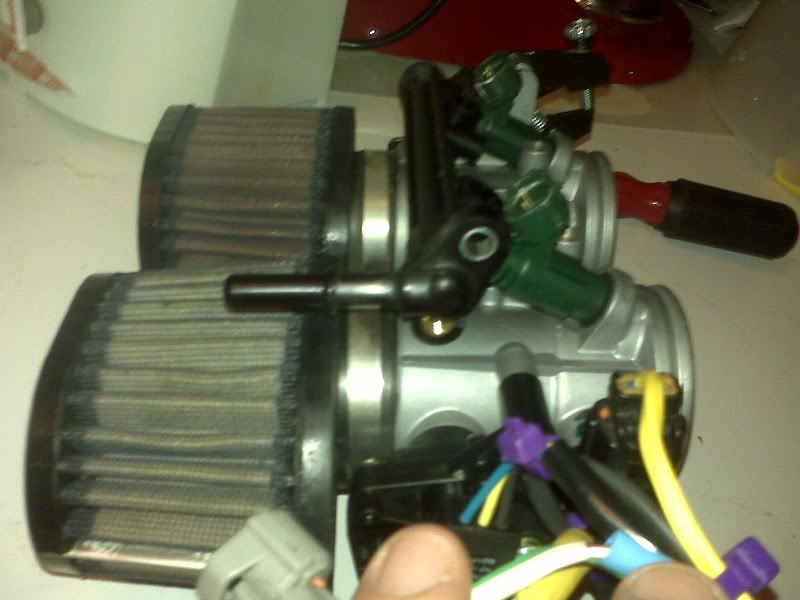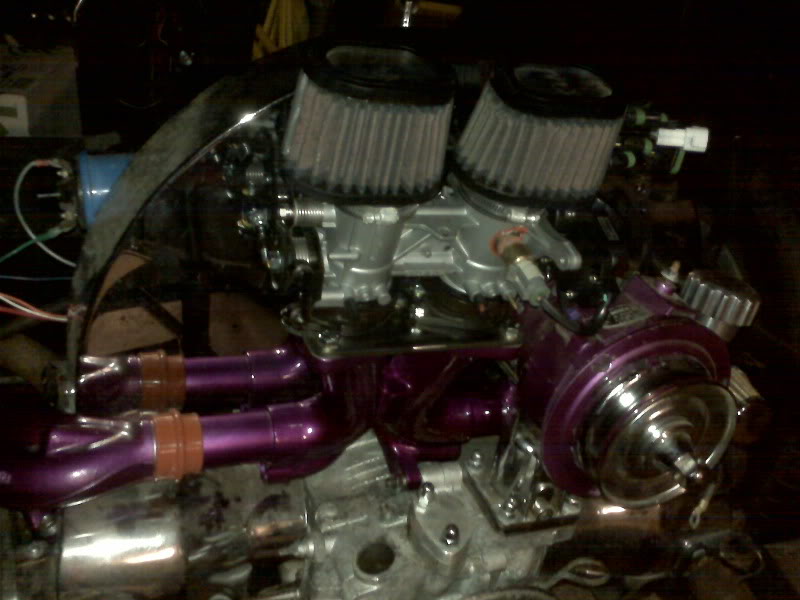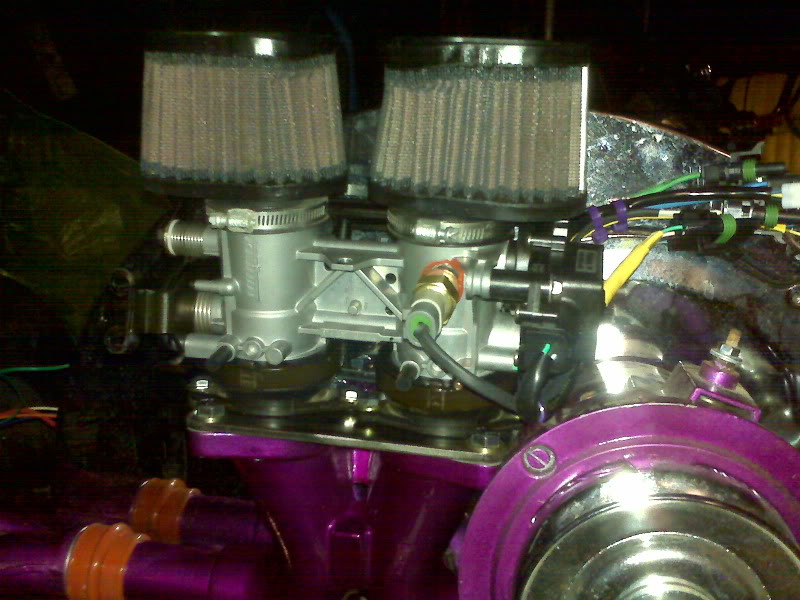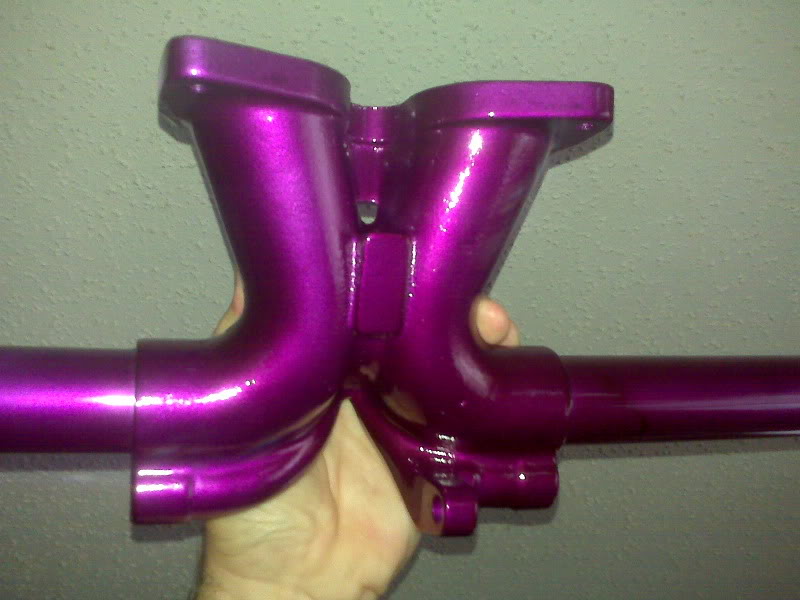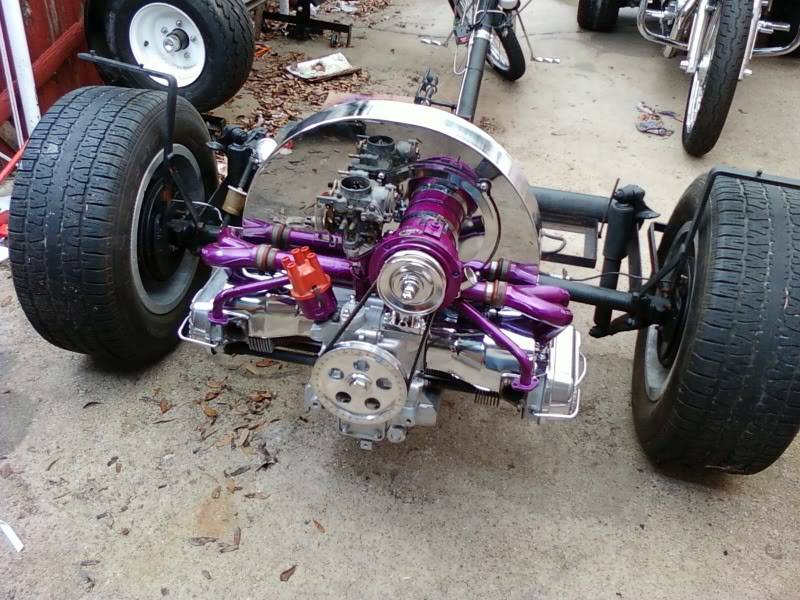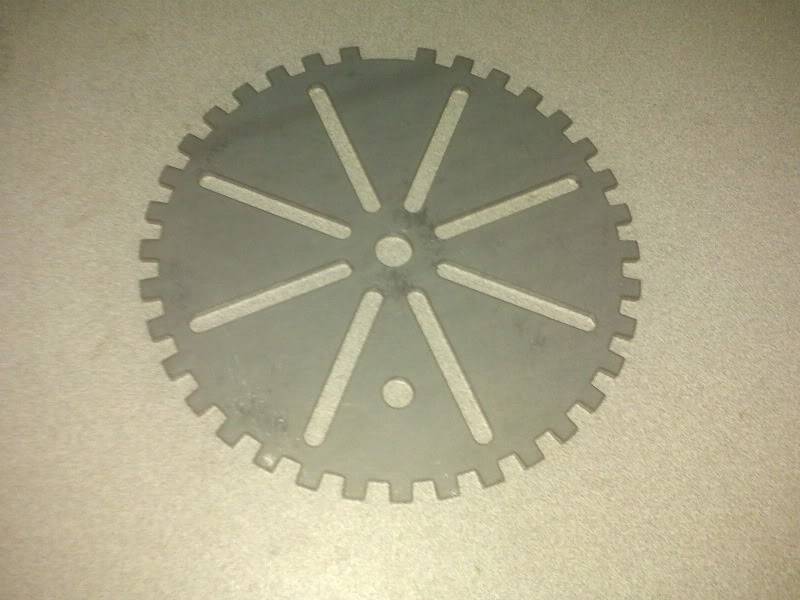The exhaust is installed, albeit temporarily. It looks great! It mounts low and does not obscure all those pretty purple and chrome bits on the engine. ![]() I hope, however, that the baja bumper clears it.
I hope, however, that the baja bumper clears it.
It’s temporarily mounted because I wanted to verify fit and take a couple of pictures. I’m very pleased with how it’s looking. As for the exhaust, before it is permanently installed, I need to strip to factory paint off it. The paint on it is plain ol’ paint intended to keep it from rusting on the boat. It is *not* high heat paint. While it’s bare, I will install the oxygen sensor bung, then repaint it with high heat paint. It’s too bad there doesn’t appear to be a purple high heat paint, at least none that I’ve found.
I also finished a few other things that were pending, like completing the installation of the alternator and putting the belt on.
While all that was going on, I set the fuel tank on a stand and put about an inch of gasoline in the bottom of it. It did not immediately appear to be leaking, but once I’d gone on and forgotten about it, I came back to see a fairly large puddle on the floor under it. ![]()
The entire bottom of the tank was wet, so I couldn’t really tell where it was coming from.
I used/tested the fuel pump to empty the tank and another day, I will lightly pressurize it with air and find the leak(s) with soap bubbles. Maybe I’ll be lucky and it will be around the pump, needing only a better gasket to fix. We’ll see.
